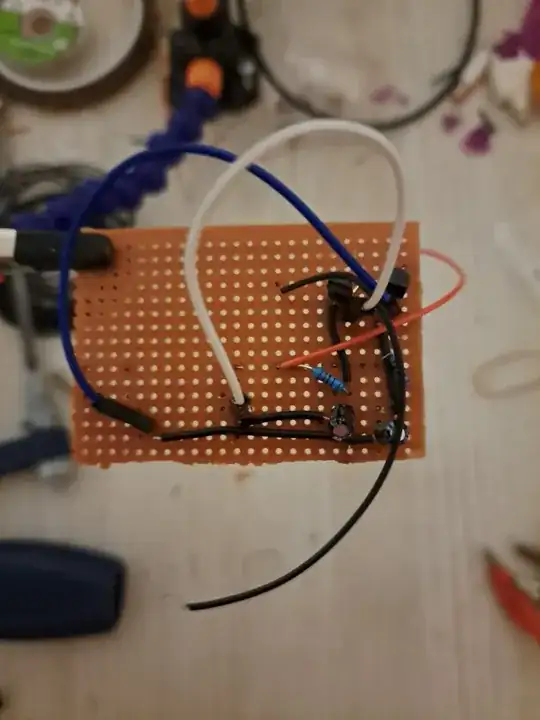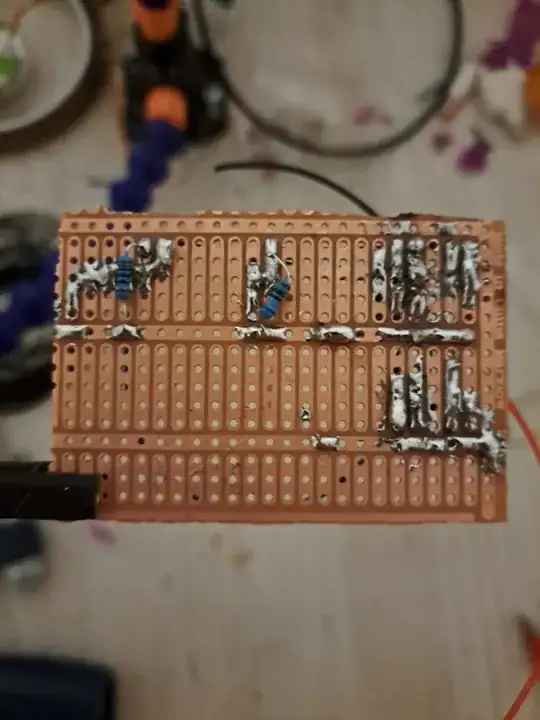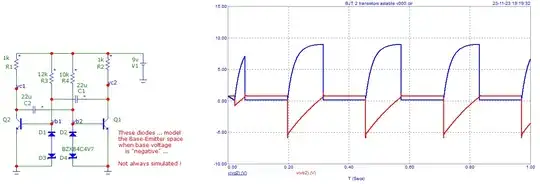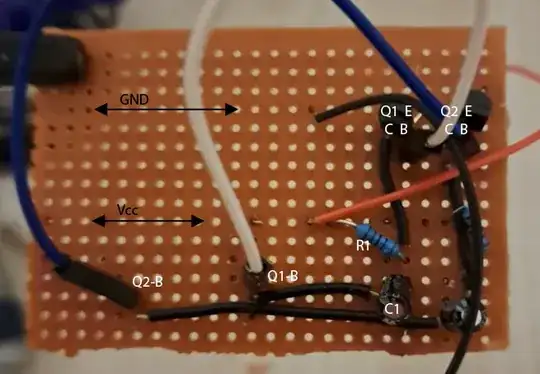I've been trying to get the Astable Multivibrator Circuit to work for a long time now, and I think I lack the knowledge to understand what's going on here.
The situation is as follows: I've checked every connection, changed the values of components, checked each component for functionality before soldering, and confirmed correct continuity on every row.
The circuit is drawing 0.086A. At 10V, there is no oscillation on any row. All I'm measuring is a voltage of 1.4V constantly after R1 and R4.
Values of Components:
R1 = 200 Ω
R2 = 1k Ω
R3 = 1k Ω
R4 = 670 Ω
Q1,Q2 = 2N3904
C1,C2 = 22uF
Link to Circuit Simulation.
Sorry for the bad soldering, but it became really challenging to keep it clean while constantly swapping out components.




